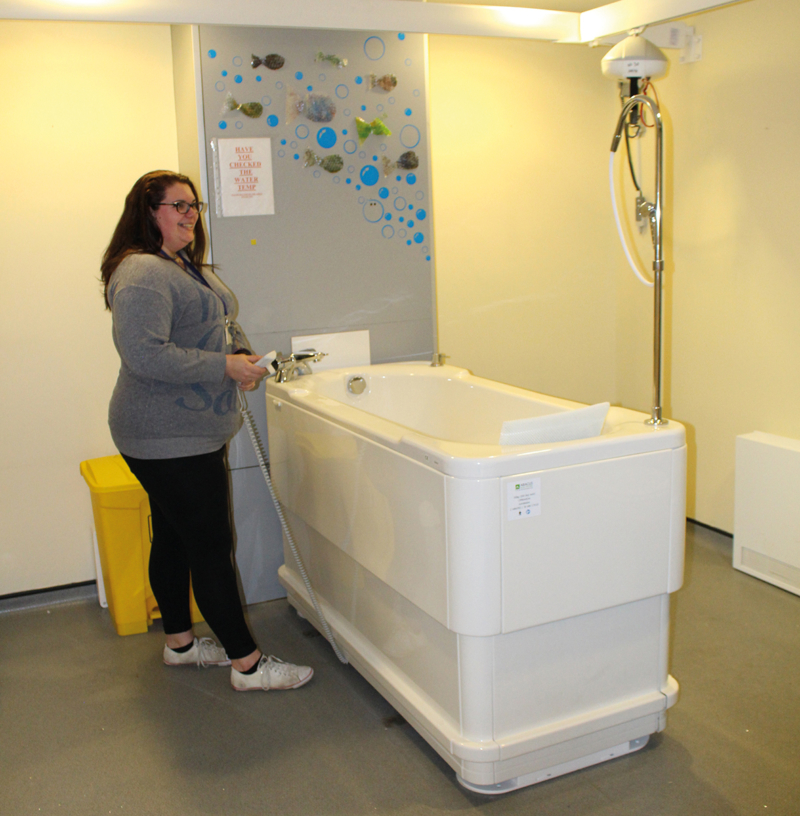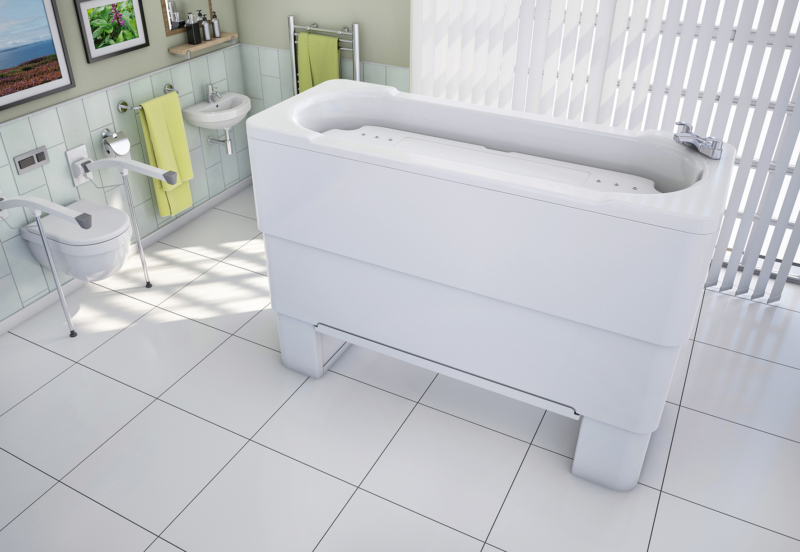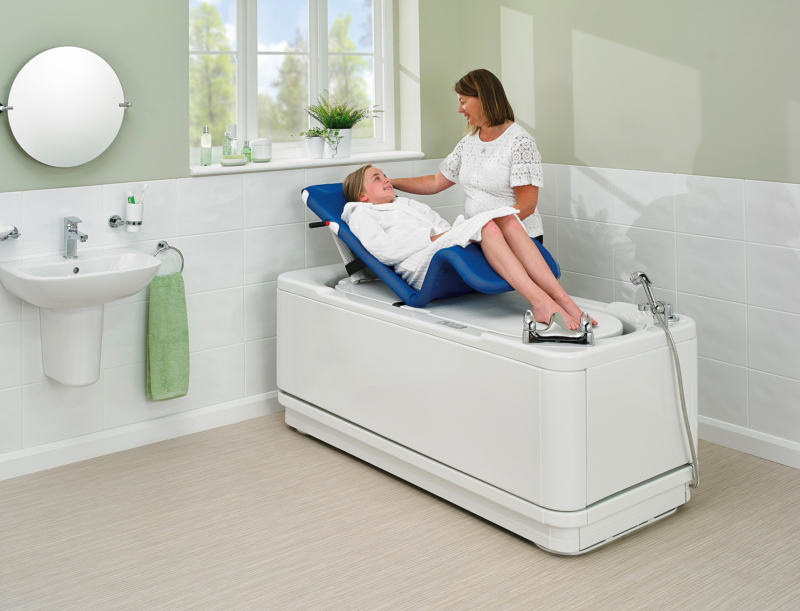Epilepsy is more than seizures: Epilepsy and bathing
International epilepsy day occurs every year on the second Monday of February. It is an opportunity to promote awareness of epilepsy in more than 130 countries and provides an opportunity to enhance the understanding of epilepsy and encourage discussion around the need for better understanding of the condition and how it can be better managed.
This year’s theme is ‘epilepsy is more than seizures’ which encourages focus beyond the myths and presumptions made about the diagnosis. There are around 60 million people living with epilepsy in the world and 600,000 of those are in the United Kingdom (Epilepsy Society, 2021). Taking into account there are 40 different types of seizure, it is essential to gain an understanding not only of the condition, but how it affects an individual and the impact it has on their ability to participate in daily life.
The National Institute of Health and Clinical Excellence (NICE) published a guideline in 2012 which was updated in 2020 which gives best practice advice on managing epilepsy, improving outcomes and supporting participation in daily life. The guidance states that all children, young people and adults with epilepsy should participate in decisions about their care, taking into account any cultural or specific needs. In addition, a risk assessment which covers ‘bathing and showering’ (NICE 2021 section 1.16.3.8) should be completed. When carrying out an assessment of a person with epilepsy, a review of bathing should be undertaken as part of a holistic assessment.
The NHS provides a generic list of ‘tips’ for people with epilepsy in order for them to stay safe at home which includes having a shower instead of a bath (NHS.uk 2020). This guidance is generic and has to cover the 600,000 children, young people and adults with the condition. However, there are ways in which people who experience seizures can benefit from a bath and the risks managed appropriately.
The World Federation of Occupational Therapy (2010) stated that the aim of client-centred intervention is to support people to undertake the occupations they need or are expected to do in addition to working with a person’s values, hopes and autonomy. Therefore, if a person with epilepsy would choose to use a bath, would benefit from bathing or wants to access a bath, they should be fully supported to achieve this goal. Their diagnosis should not preclude them from participating in the occupation of bathing.

The barrier to bathing for people with epilepsy, has arisen from the complexities of the guidance around removing a person from a bath when they are having a seizure or supporting their airways to remain clear of the water (Epilepsy Foundation, 2016). This is entirely reasonable when offered the choice of a standard bath versus a shower. However, there are alternative solutions available to support people with epilepsy to bathe with the risks reduced to both the bather and carer. Height adjustable baths with an integrated platform such as the Gemini Bath from Abacus, allow a person to be safely lifted from the water in a controlled way, reducing the manual handling risks to the carer and allowing the bather to remain on a solid surface. They have been successfully installed for children, young people and adults with a diagnosis of epilepsy. Case studies are available on the Abacus website: www.abacushealthcare.co.uk including information on the bath installed at the Young Epilepsy Education Centre in Surrey.

When seeking funding for a height adjustable bath or demonstrating clinical reasoning for supporting a person with epilepsy to access a bath, a risk assessment is valuable in indicating that any risks have been carefully managed. The risk assessment should include: avoidance of triggers, knowledge of seizure warnings, understanding of frequency of seizures and patterns e.g. avoidance of bathing at a particular time of day and the presence of a carer at all times (Royal College of Psychiatrists, 2017). Support for the adaptation from clinicians such as specialist epilepsy nurses may also be useful if the risks have been demonstrated that they have been addressed and the use of a height adjustable bath explained. However, it is an occupational therapist’s role to enable people to overcome the barriers that prevent them from doing the activities that matter to them, like bathing; to take opportunities to overcome those difficulties and not to use risk as another barrier (RCOT. 2018a). It is important to review what the person will gain from bathing from a social, psychological and physical viewpoint. It is also therefore essential that clinical reasoning and risk is documented along with the source of information about a person and any discussions had (RCOT 2018b). Consequently, an understanding of the person’s view on using a bath and discussions with them (or their carer) on the risks and how these can be addressed is integral to meeting their needs and their wishes.

It is recognised that the provision of height adjustable baths can be a complex adaptation which requires structural changes to the home and a review of the spatial layout of a bathroom and the specialist skills of occupational therapists should support their implementation (Royal College of Occupational Therapists, 2019). Occupational therapists are therefore pivotal in supporting people with epilepsy to use a bath safely if they wish to do so. Funding streams for a height adjustable bath are varied; however, the provision of a Disabled Facilities Grant via a local authority is frequently used. The legislation that guides this states that the grant can fund a shower or bath or, (if more appropriate), both a shower and bath (Housing, Grants, Construction and Regeneration Act, 1996). It is important to note that a holistic and client-centred assessment of bathing needs, is not limited to the provision of a level access shower as the only solution to the barriers identified. A thorough assessment seeks to understand the person with epilepsy, the barriers to participation and their culture, needs and wishes with regards to bathing. The specialist knowledge of any complex needs by an occupational therapist, familiarity with products available, along with a robust risk assessment supports people with epilepsy bathe to safely. Myths and assumptions regarding bathing should be challenged and supports the recognition that epilepsy is more than just seizures.
Epilepsy (2016) Seizures in Water. Retrieved from: https://www.epilepsy.com/article/2020/2/seizures-water accessed on 31.01.2021.
Housing, Grants, Construction and Regeneration Act (1996) c1 [online] Retrieved from: https://www.legislation.gov.uk/ukpga/1996/53/section/23 Accessed on 31.01.2021.
NHS.uk (2020) Living with Epilepsy. Retrieved from: https://www.nhs.uk/conditions/epilepsy/living-with/accessed on 31.01.2021.
NICE (2020) Epilepsies: Diagnosis and Management. Retrieved from: https://www.nice.org.uk/guidance/cg137Accessed on 31.01.2021
Royal College of Occupational Therapists (2018a) Embracing risk; enabling choice: Guidance for occupational therapists. Retrieved from: https://www.rcot.co.uk/sites/default/files/RCOT%20Embracing%20Risk%20FINAL%20WEB_0.pdf Accessed on 31.01.2021.
Royal College of Occupational Therapists (2018b) Keeping Records: Guidance for occupational therapists. Retrieved from: https://www.rcot.co.uk/practice-resources/rcot-publications/downloads/keeping-recordsAccessed on 21.01.2021
Royal College of Occupational Therapists (2019) Adaptations without Delay: A Guide to planning and delivering home adaptations differently.
Royal College of Psychiatrists (2017) Management of epilepsy in adults with intellectual disability: Appendix. Retrieved from: https://www.rcpsych.ac.uk/docs/default-source/improving-care/better-mh-policy/college-reports/college-report-cr203-appendix.pdf?sfvrsn=3f234905_2 accessed on 31.01.2021
World Federation of Occupational Therapy (2010) Position Statement: Client-Centredness in Occupational Therapy. Retrieved from: https://wfot.org/assets/resources/Client-centredness-in-Occupational-Therapy.pdfAccessed on 30.01.2021.

